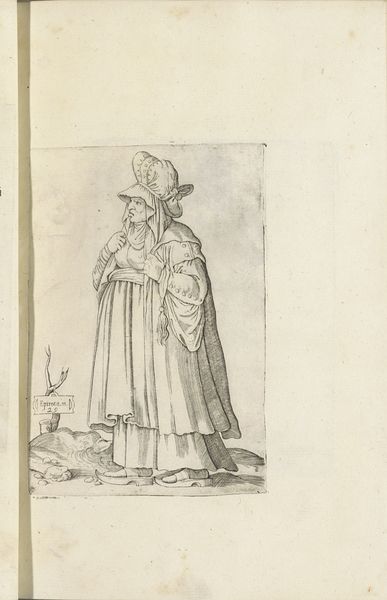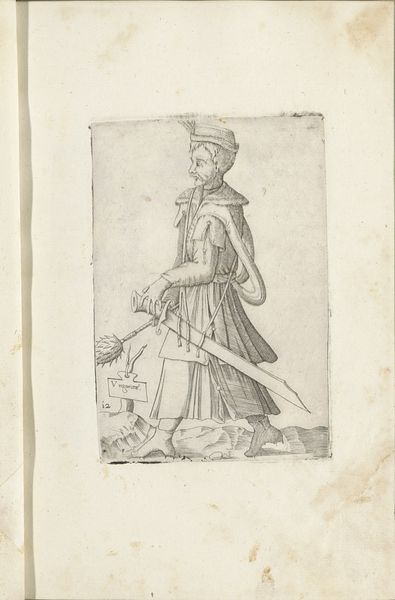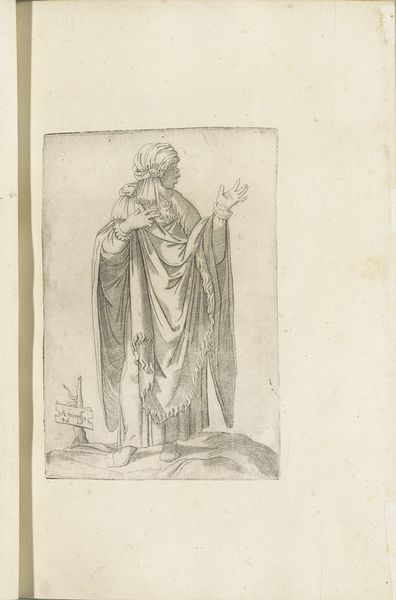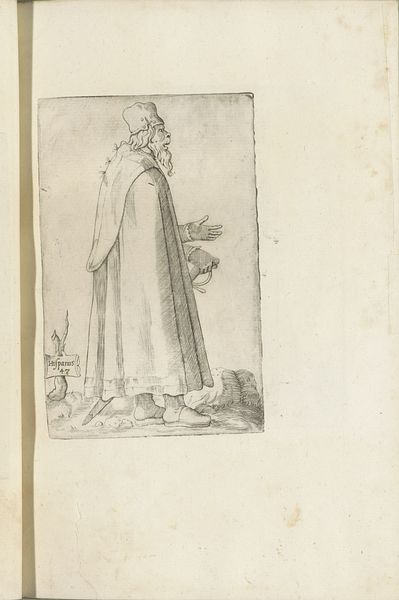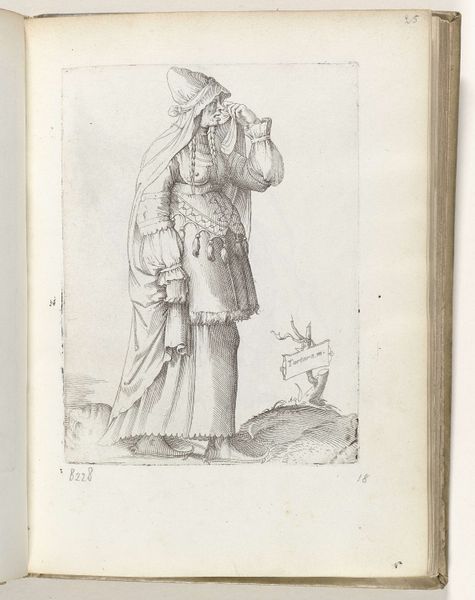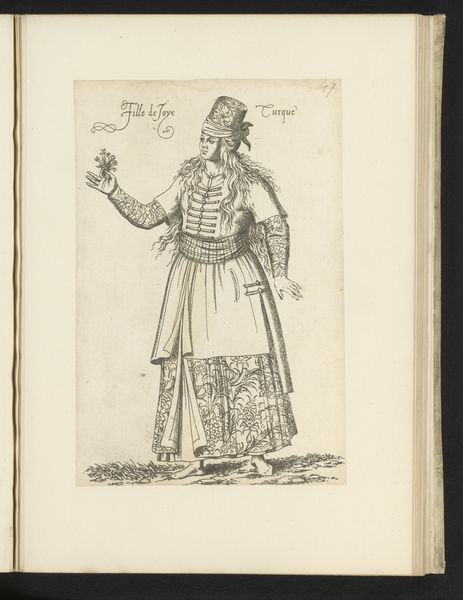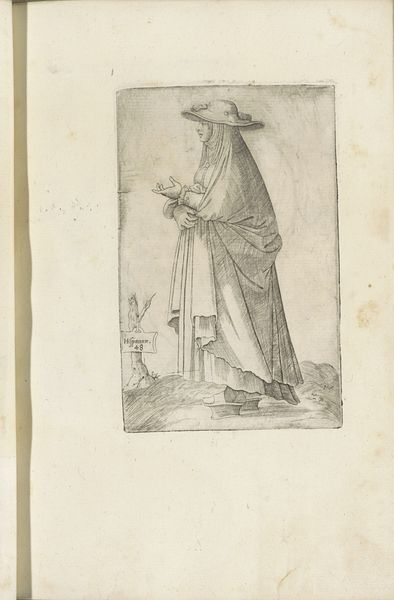
print, engraving
#
portrait
# print
#
mannerism
#
figuration
#
engraving
Dimensions: height 150 mm, width 92 mm
Copyright: Rijks Museum: Open Domain
Curator: Here we have Enea Vico's "Epirota m(ulier)," a print dating from before 1558, now residing in the Rijksmuseum. It's a detailed engraving of a woman, rendered in the Mannerist style. Editor: Immediately, the stark lines and somewhat severe expression convey a feeling of austerity, a stern gaze fixed on some distant point. Curator: Indeed. Vico situates this woman, identified as an Epirote, within a visual language of power and status, but also of specific cultural representation. Who was she, what was her social position within Epirote society? The text itself might function as a kind of early ethnographic marker. Editor: From a formal point, observe the drapery; the lines almost seem to dissect rather than caress the fabric. What does the density of line-work communicate about the cape versus her simple dress? Curator: This could tell us something about Vico’s interest in rendering textures as a form of communicating hierarchical codes of class or occupation. The meticulous rendering speaks volumes. And it’s not only her attire that speaks, but the symbolic weight assigned to her stance in relation to a generalized, if classical landscape—in this case, signified by the stone. Editor: What do you make of the object held near her breast? Curator: Ah, yes! A reminder perhaps of her potential role as the woman holding both the home and knowledge together during shifting alliances, but this demands we ask not only who does she become on paper in service of? We must address whose interests it served and how this figure engages themes related to broader intersectional narratives about the era. Editor: It’s fascinating how much detail Vico manages to convey. This piece is an exceptional example of how the limitations of monochrome engraving can, paradoxically, enrich the viewing experience, almost compelling you to decode, pixel by pixel. Curator: Absolutely, it challenges us to delve beneath the surface, seeking not just to understand a visual representation but to explore the multifaceted layers of history, identity, and power dynamics at play. Editor: It is certainly an engraving that invites much deliberation, not just on its execution but its subject's story.
Comments
No comments
Be the first to comment and join the conversation on the ultimate creative platform.
